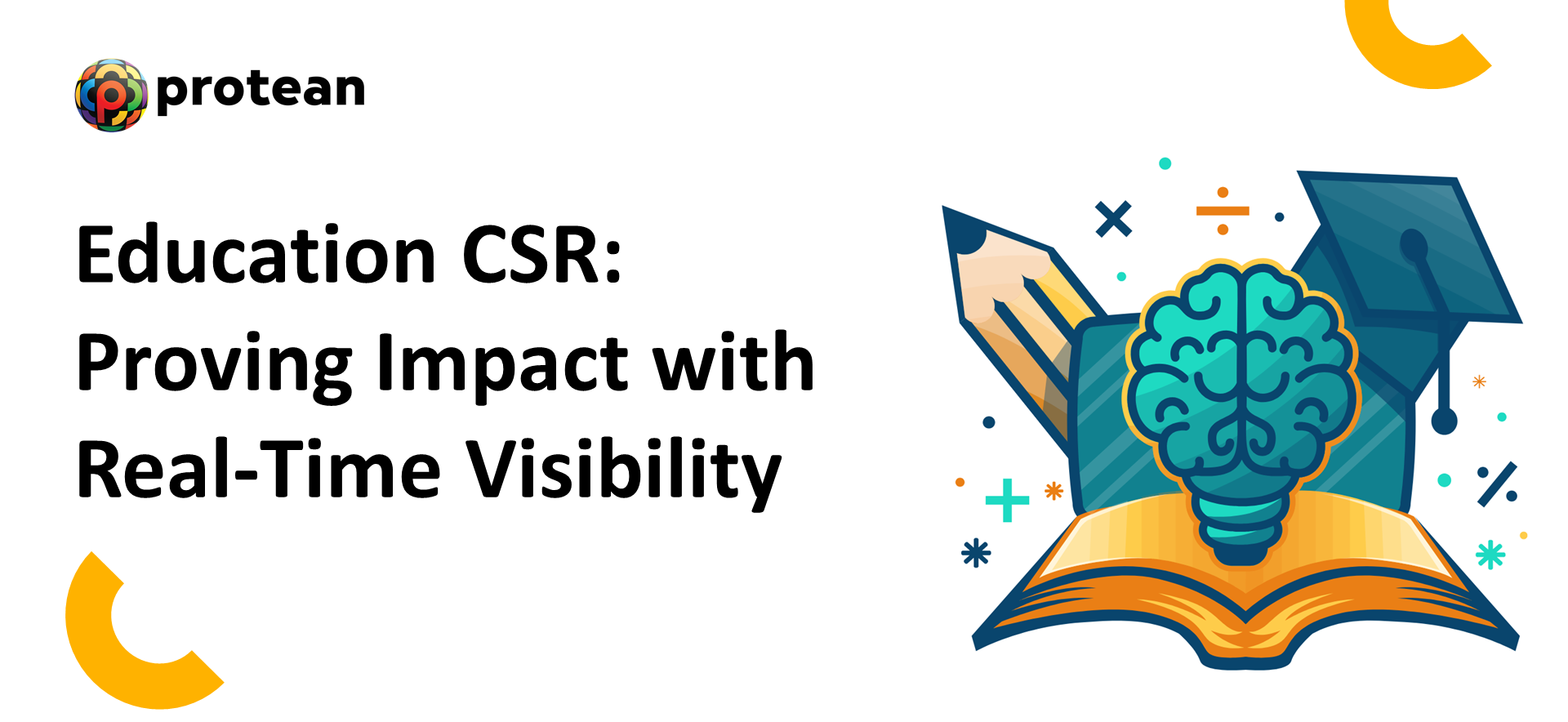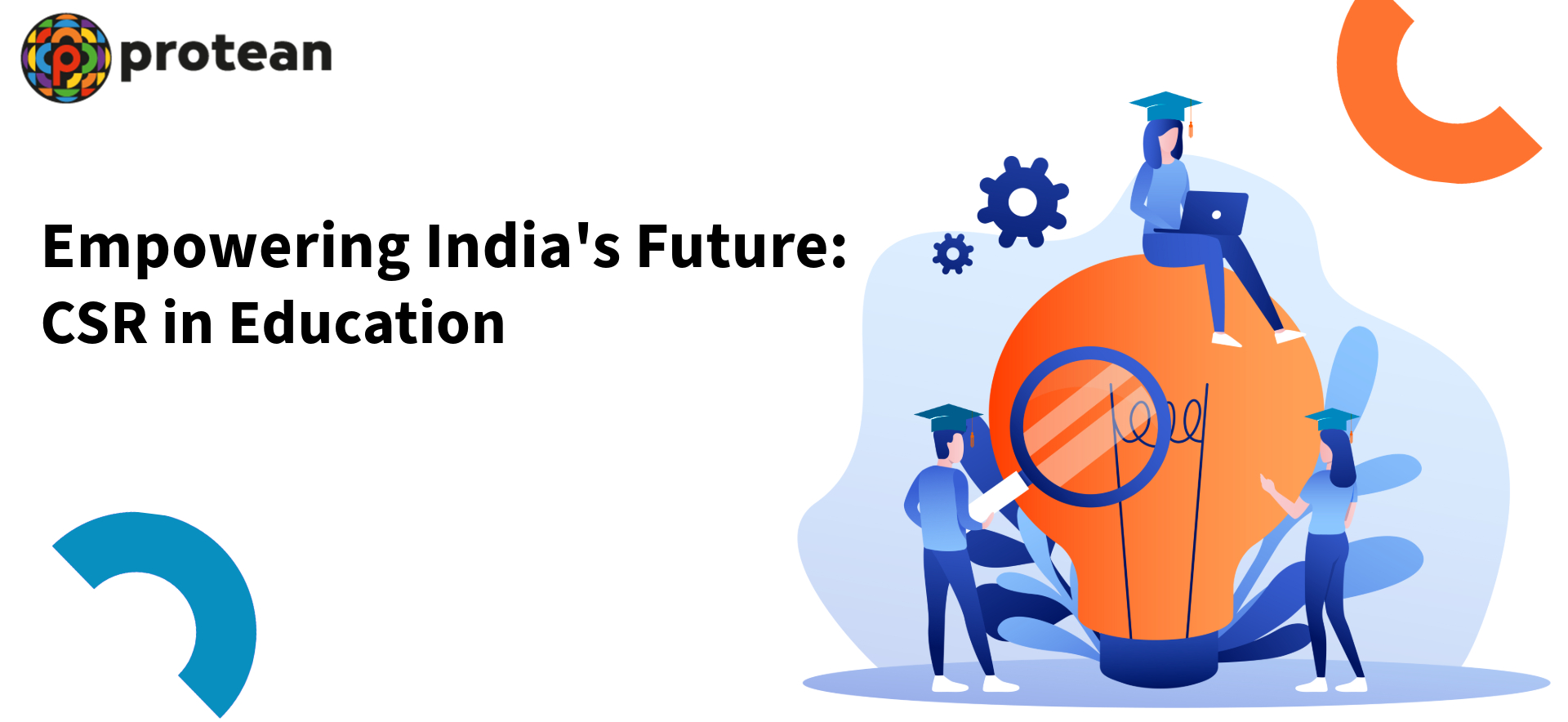Blogs
Why Education CSR Needs Real-Time Visibility
India’s corporate social responsibility (CSR) landscape is thriving. With spending reaching an impressive ₹35,000 crore in FY2023–24, up from ₹26,210 crore in FY2021–22, and projections to triple by FY2034–35, the scale of corporate giving is undeniable. This growth is a testament to the private sector's commitment to national development. However, as the numbers grow, so does a critical question: is this immense funding pool translating into a measurable, tangible impact?
For many companies, a significant credibility gap exists. While the intent to do good is strong, the ability to prove the outcome of that good is often weak. Most CSR reporting remains output-driven, focusing on funds spent and activities completed, rather than on the long-term change and student progress that truly matter. This is the core challenge of impact visibility in CSR, and it is a challenge that can only be solved with the right digital public infrastructure.
The Data-Driven Case for Real-Time Visibility
The need for real-time visibility is not just an abstract idea; it is a necessity backed by data.
According to a 2024 report, a staggering 72% of implementation partners either lack a structured data management system or depend on ad-hoc systems. This widespread weakness in monitoring and evaluation is a primary reason why many companies are unable to demonstrate the true impact of their projects. Furthermore, much of the disclosed impact information is retrospective, shared only in annual reports, which severely limits real-time insights and decision-making.
This leaves CSR leaders in a difficult position. Without clear data, it's impossible to know which programs are working, where to allocate more funds, or how to build a stronger case for social investment with boards, auditors, and regulators.
Education: The Ideal Test Case for Impact Visibility
Education is an excellent starting point for solving the challenge of impact visibility in CSR. As one of the largest beneficiaries of CSR funds, consuming over one-third of total allocations, education scholarships provide a clear, logical, and natural chain of evidence.
Unlike other, less tangible initiatives, a scholarship program follows a direct and measurable path:
- Applications are submitted and can be digitized.
- Verification of student eligibility and documents can be automated.
- Disbursals can be tracked in real-time.
- Student progress can be monitored through grades and attendance.
- Outcomes such as course completion rates and employability can be measured and reported.
This clear chain of evidence allows companies to prove both the reach of their program (how many students were supported) and the depth of their impact (how those students' lives were improved). It demonstrates precisely how funds translate into real, life-changing outcomes, a powerful narrative that builds trust with all stakeholders, including regulators and auditors.
| Also Read: How CSR Tech Can Transform Under-Served Regions in India |
The Power of Digital Infrastructure as the Enabler
The key to unlocking this level of visibility lies in robust digital infrastructure. A purpose-built digital platform is the bridge between a company's financial commitment and the real-world impact of its CSR program. Such platforms provide a central ecosystem where all stakeholders can connect and collaborate.
These tech solutions and dashboards can:
1. Enable
Real-time tracking of every single scholarship, providing a live view of the program's progress.
2. Offer transparent
Audit trails, with every action and transaction logged and timestamped, simplifying compliance checks.
Connect corporates, NGOs, and educational institutions within a single system, breaking down silos and improving communication.
3. Generate
Outcome-level reports that go beyond fund disbursal, providing data on completion rates, employability, and other key metrics. With this kind of digital public infrastructure, companies can finally move past the retrospective, ad-hoc reporting of the past. They can make data-driven decisions, adapt programs on the fly, and truly understand the return on their social investment.
The Way Forward: Proving Impact, Not Just Intent
In the modern CSR landscape, visibility is no longer a "nice-to-have" feature; it is central to a program’s credibility. The future of CSR will be judged not just by what gets funded, but by what gets proven.
Education scholarships offer a unique opportunity to lead this charge. When powered by the right technology, they can become the gold standard for outcome-based CSR. The ability to show a clear line from a CSR fund to a student’s academic success, and ultimately to their employability, is the most powerful story a company can tell.
It's time for CSR leaders to embrace a new era—one where a strong commitment is matched by a strong system of accountability. By investing in digital public infrastructure, they can finally achieve true impact visibility in CSR, proving beyond a doubt that their efforts are not just a feel-good exercise, but a genuine engine for positive and lasting change.






